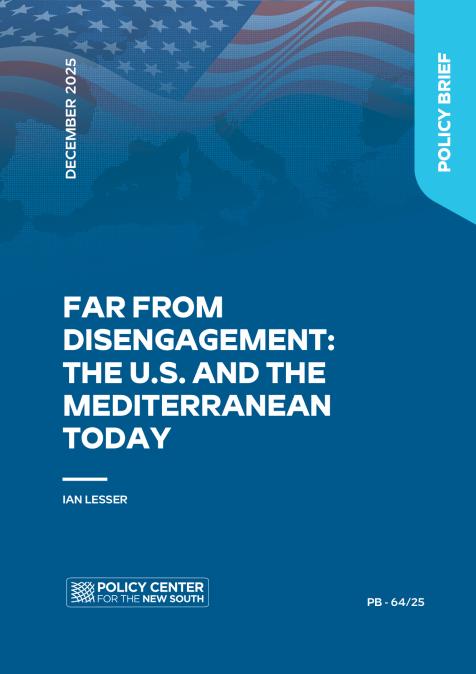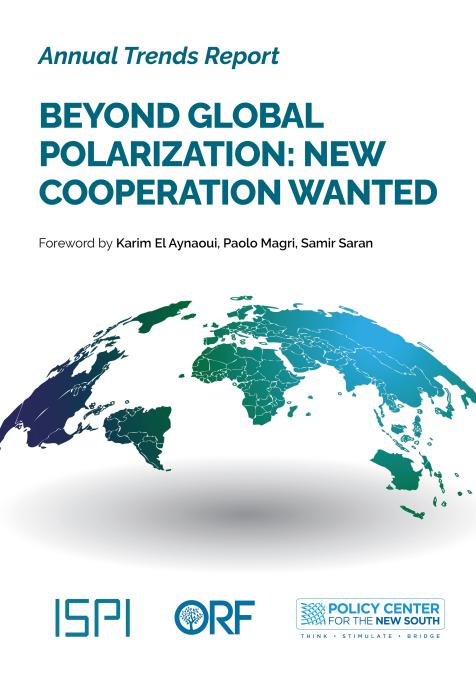Publications /
Opinion
The moon and space exploration are tempting more nations than ever. Global powers are preparing for possible space war. The visions of science fiction writers are approaching reality…
“THAT BRIGHT LOVELINESS IN THE ETERNAL COLD”
The moon was mysterious, the man on the moon an extravagant imagination, unreachable except in our fanciful mental images, or the make believe of science fiction authors. One day in December anno 1968, three men orbited the moon, really did, 240 000 miles above earth. For the first time in human history, three homo sapiens, Americans, observed earth from space, “small, and blue and beautiful” as mission commander Frank Borman later quoted poet Archibald Mac Leish while being honored by the U.S. Congress, “in that eternal silence where it floats, is to see ourselves as riders on the earth together, brothers on that bright loveliness in the eternal cold-brothers who know now that they are truly brothers.” A message of hope in miserable, strenuous, even unfathomable times. Since that year, two icons of America were assassinated by evil forces, Robert Kennedy, the brother of U.S. president John F.Kennedy (himself murdered while leading his nation), and the Afro American civil rights leader Martin Luther King.
Six months later, another page of history was written -two men stepped onto the moon, Sunday 20 July, 1969, Houston. I never forgot that date, since I was assigned to cover the landing from the Mission Control Center in Texas, me and hundreds of reporters following the touch down on the site written into history books as Tranquility Base. The minutes, seconds before touch down created a collective, global, fever of anxiety, an adrenaline like tension, a spirit between constrained jubilation and repressed fears. A new chapter. A spirit of humanity. At last. Two men on the moon, “a small step for a man, one giant leap for mankind” (Neil Armstrong ‘s first words), followed by hundreds of million global citizens on black and white TV. The rugged boot prints of Armstrong and Buzz Aldrin, half a century later, are still visible on the moon surface, marking humanity’s first steps on another world. Roughly 100 items were left behind, parts of the lunar lander, an American flag, some garbage bags. Armstrong and Aldrin were the first, but others followed. Six Apollo landing sites in total, the spot where the Soviet Luna 2 spacecraft landed in 1959 and became the first human made piece of hardware to touch another world. Or the site where, in January of this year, China’s “Chang’e-4” achieved the first landing on the far, the dark side of the moon.
FIELDS OF RADIATION AND DEVASTATING METEORITES
The first manned journey of men around the moon, into the universe, poet Mac Leich hoped would help to create a new era, our planet as a kind of lifeboat, “that tiny raft in the enormous, empty night.” Helas, climate change is threatening to drown islands, devastate tropical forests, suffocate human breathing. Wars are savaging civilization and its culture, famine decimates children and the future of our species, floods wash away villages and towns, hope and laughter, the innocence of being. The follies of mankind, driven by power and greed, to control, tyrannize and repress. If there is salvation for mankind, could it be the universe, measurable only by light years, and distances in trillions of miles? While you read these lines the American spacecraft “New Horizon” is advancing with a speed of 31000 miles an hour into the unknown of cosmos, as deep as any man made object ever advanced towards the mystery of creation. Early January of this year, after a flyby of Pluto the spacecraft did send first image ever from “Ultima Thule”, an asteroid, the most distant object in the universe a spacecraft ever reached—6.327.633 043 km (four billion miles). Will the moon be the first base in the exploration and colonialization of distant planets, to mars for example –a nine months’ journey at speeds unknown to human bodies, through fields of radiation and devastating meteorites? Has humanity, at least partly, abandoned hope for our earth, or why are the powers and the powers to be, now competing for the moon or mars, imagining to discover extraterrestrial settlements in the eternal universe or exploiting asteroids filled with rare minerals like gold, platinum and palladium?
25 TRILLION MILES AWAY
On July 14th of this year India had to stop the launch of its “Chandrayaan-2” rocket, aimed at reaching the moons uncharted South pole- 56.24 minutes before liftoff. A technical failure. Japan is preparing its first lunar lander and rover mission, the European Space Agency announced plans to mine lunar ice by 2025, the White House promised another moon landing by its astronauts within five years, and NASA, the National Aeronautic and Space Administration, hopes to send astronauts to mars by 2033. Scientists are expecting a call any day now from extraterrestrial creatures of genial minds and strange body structures. The very serious and cautious “National Geographic” Magazine (March 2019) insisted: “The question is no longer is there life beyond earth. It’ s a pretty sure bet that there is. The question now is, how do we find it?” Good question. “National Geographic” scientists identified 47 potentially habitable exoplanets. To be even more confused about what eternity seems to be, science has figured out that the milky way harbors 100 billion stars, and at least 25 billion places exist “where life could conceivably take hold in our galaxy alone-and our galaxy reminds the magazine specialized on nature, “is one among trillions.” Since Beijing is working on a super heavy lift launch vehicle for future Mars sample- return mission, estimated for 2028, the Chinese pioneers may not return with a kilo of red mars dust, but surprise us with some extraterrestrial George Clooney look -alike, born on a rocky planet called “Proxima Centauri 6”, orbiting in the habitable zone of Proxima Centauri, the nearest star to our own -about 4.2 light years, 25 trillion miles, away. Almost next door.
Billions of dollars, incredible amounts of money, are needed to move on into the infinite, measureless space. Why not risk to save our earth before we search for extraterrestrial beings, possibly superior to our intelligence, which we have to prop up with A.I. anyhow? The USA, Russia, China are dealing with devastating poverty in towns and rural regions. Yet, they are competing for dominance in space, trying to rule through military might and economic control: Make America great again, Donald Trump promised his voters, and, sure enough, another moon landing is one of the items, although Apollo 11 did not make America less racist and the poor are not getting one tooth for free. Only twelve people have been walking the moon since Aldrin and Armstrong hopped like kangaroos on the moon surface, all of them between 1969 and 1972, all moonwalkers were men, all American and almost all of them listened to country and western music on the way up. The priorities had shifted, the Pentagon budget is now nearly 700 billion dollars, NASA’ s budget is estimated a half percent of the national budget--- 21.5 billion. But a modern space race between governments and private companies is on the way, astronauts, robots and rovers ready than never before to conquer space, extend control from above, sophisticated space weapons, once the phantasy of science fiction writers, aiming at the enemy from space.
Trump did not only authorize another moon ride, but, in February of this year, announced a plan to create an American space force, which will centralize nearly all the Defense Departments space related programs into a new military branch, just as China did almost five years ago. At a meeting of the National Space Council a month later, US Vice President Mike Pence warned that China had “revealed its ambition to seize the high ground and become the world’s preeminent space faring nation” by landing its lunar vehicle on the far side of the moon, a rather difficult exploit since radio communications with earth are impossible, and the surface on the landing site is rough, with a mountain taller than anything on earth. The impressive smooth landing of “Chang’e-4, reported the “New Yorker” (May 6, 2019 is a step in China’s long term plan to build a base on the moon, a goal towards which the country has rapidly advancing since it first orbited the moon in 2007.
BLACK MATTER, DARK ENERGY, EXOPLANETS
Washington and Bejing are “pouring money and resources into an increasingly militarized space race that some security specialists and former US officials fear is heightening the risk of war”, reported “Politico.” Both countries are developing cyber weapons that would take out each other’s satellites. In a threat assessment of China’ s military, the Pentagon is citing “space” 86 times and warns that the “People’s Liberation Army” is working on “enabling long range precision strikes”. China is already in possession of more than 120 intelligence, surveillance and reconnaissance satellites. About half of these assets are owned and operated by the military and could be used to track and target US forces around the world and, particularly, above the South China Sea, a possible theatre of confrontation. China has demonstrated significant skills in military applications: in 2007 Beijing organized an antisatellite test, launching a ground based missile to destroy a failed weather satellite. While successful, the test created a cloud of orbital debris that continues to this day to threaten other satellites.
The Pentagon confirmed that China’s space program “continues to mature rapidly.” Six “Shenzou” spacecraft missions carried 12 “taikonauts” into low earth orbit, including two to China’ s first space station, “Tiangong-1. Beijing is not only planning to build a larger space station, but is mounting a space telescope program as well, aimed to help in the search of black matter, dark energy and exoplanets. China is also heavily investing in so called counter space technology, including the development of at least three antisatellite missile systems, according to an April report of the Center for Strategic and International Studies, one of the Policy Center’s think tank partners. Unlike Russia or the US, China is also believed to have the capacity to use missiles to attack satellites in the more distant geosynchronous orbit, or 22 000 miles above earth. NATO, whose member nations own about 65 percent of the satellites in space, seems in no rush to arm itself with space weapons, the alliance only decided to consider space a “domain of warfare”. To assure the development in space, announced Emmanuel Macron, President of France, on the eve of the Bastille day celebration, a high command for space will be created in September.” France is boosting its military readiness, “revealed the “Space Daily”, “following increases of interest in the area by the US, China and Russia. Observers see military activities- including spy satellites, location tracing, jamming communications and cyber-attacks –increasingly being set up in orbit around earth.”
A DOG NAMED LAIKA
The move by France, reported Norimitsu Onishi in the ”New York Times”, was “the latest sign that the era of fighting in space-disabling or even shooting down satellites on which warfare on earth is increasingly dependent, was getting closer.” Space is increasingly seen as a strategic asset, not only by the major space powers like France”, said Jean Jaques Tortora, director of the European Space Policy Institute of Vienna,” space might potentially be the theater of military operations, and this justifies the setting up of dedicated space commands to manage these sorts of operations.” Whoever controls space, controls the earth, that is the lesson of time. How naïve, almost poetic, were the astronauts, who stepped onto the moon half a century ago, saluting the stars and stripes, taking selfies. Their adventure, which in reality was nothing less but to make America great again-because a Russian dog named Laika challenged the nation: The stray dog became, on November 23, 1957, the first living creature to orbit the earth, prepared for the historic journey with one meal and seven days of oxygen. The orbit of the husky/spitz mix, 2000 miles above earth, fascinated the world and alarmed Washington. Sputnik 1 had just weeks prior challenged the American ego, because the communists had achieved history, sending the first man made space vehicle into space, October 4, 1957. And now this, a flying dog. Sputnik 2 orbited earth 2570 times, Laika died a day or two after lift off-the heat shield broke and then her heart.











